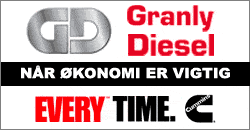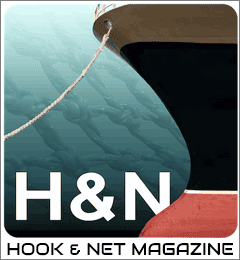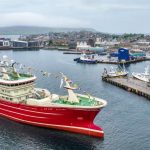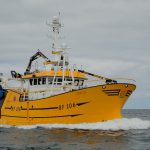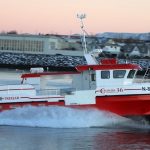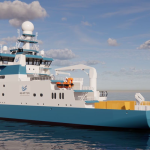The importance of accurate reporting by the vessels operating in the South African trawl fishery for hake was the focus of a day-long workshop attended by skippers, fleet managers, vessel operators and fishing company representatives participating in discussions led by SADSTIA and its scientific collaborators.
Self-reporting by every vessel in the fleet has become increasingly important as the trawl fishery moves into the final year of its current certification with the Marine Stewardship Council (MSC) and prepares for re-assessment under Version 3 of the MSC’s Fisheries Standard.
Version 3 is understood to be much more demanding than Version 2 against which the fishery was assessed in 2020.

South Africa’s hake trawl fishery was the first hake fishery in the world to be certified as sustainable and well-managed by the MSC. It has been certified for four five-year periods since 2004. The latest certification period will end in 2026 and the re-assessment process is expected to begin later this year. The target date for recertification is February 2026.
At the workshop, data expert Mike Bergh, noted that under Version 3 of the MSC Fisheries Standard, the emphasis has shifted to encompass the impact of fishing on the environment.
‘The whole face of fisheries management is changing,’ he told the audience.
‘There is concern about the impact of fishing, not just on a target species, but on the environment and on other species. The profile of environmental impacts has been raised around the world and that is becoming part of what we have to do to manage the fishery.’
The shift in emphasis demands much more from the skippers and crew of a trawl vessel. They are required to accurately report interactions with endangered, threatened and protected (ETP) species, including seabirds, seals, turtles and sharks. The crew is also required to measure the fishery’s impact on seabed habitats by reporting the catch of invertebrates like sponges and hard corals, some of which may provide evidence of the interaction of trawl gear with vulnerable marine ecosystems.

Much of the focus of the workshop was on the importance of accurate reporting, the format in which data should be submitted and the ways in which data is analysed and used.
Robert Landman, Chairman of SADSTIA’s Scientific Committee emphasised the centrality of the fishing vessel as a source of accurate information.
‘The MSC wants to know that fishing is done correctly and the only way we show them is to collect information accurately and concisely,’ he said, drawing attention to the fact that SADSTIA and its scientific partners are able to provide training and support in data gathering to individual vessels.
The value of MSC certification to the trawl fishery for hake is substantial. A study conducted in 2016 determined that hake prices and market structure would be severely adversely affected by the loss of MSC certification, with a negative impact on shore-based employment. In a worst case scenario, this could mean the loss of 1 421 skilled workers.
In the event of the loss of MSC certification, the decrease in the contribution of the fishery to South Africa’s gross domestic product was projected to be between 28.3% and 54.3% or R2.4 billion and 4.7 billion (based on an annual economic contribution of R8.6 billion, measured by economists in 2020).


